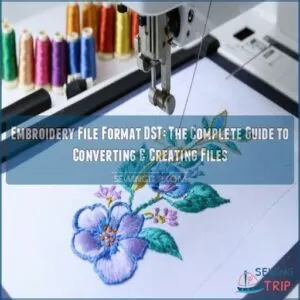File Bordir DST PES: The Ultimate Guide for Sewing Enthusiasts in the US
For sewing enthusiasts in the United States, understanding file formats is essential to achieving precision and efficiency in their craft. Among the various file types used in embroidery, DST and PES are two of the most common. These files serve as digital blueprints that guide embroidery machines in creating intricate designs on fabric. Whether you’re a hobbyist or a professional, mastering these file formats can significantly enhance your sewing experience.
Understanding DST and PES Files
DST (Digital Stitch Technology) and PES (Pantone Embroidery System) are both file formats used in the embroidery industry. While they share similarities, there are key differences that set them apart. DST files are primarily associated with Brother embroidery machines, while PES files are commonly used with Janome and other compatible machines. Both formats store stitch data, including color changes, thread tension, and needle positions, which are crucial for accurate embroidery.
The main advantage of DST and PES files is their compatibility with different embroidery machines. This means that once you have a design in one of these formats, you can often use it across multiple machines, provided the software supports the format. However, it’s important to note that some machines may require conversion between formats to ensure proper functionality.
How to Use DST and PES Files
Using DST and PES files involves a few straightforward steps. First, you need to choose the right software that supports these formats. Popular embroidery software like Wilcom, Embird, and Hatch offer robust tools for editing and converting files. Once you have the software installed, you can open the DST or PES file and make any necessary adjustments, such as resizing, repositioning, or changing colors.
After making your edits, you can transfer the file to your embroidery machine using a USB drive or an SD card. It’s crucial to follow the manufacturer’s guidelines for transferring files to avoid errors. Some machines may require specific settings or additional steps to ensure the file is recognized correctly.
Tips for Working with DST and PES Files
- Check Compatibility: Before purchasing or downloading a file, verify that it is compatible with your embroidery machine. This will save you time and prevent frustration down the line.
- Use Quality Software: Invest in reliable embroidery software that offers advanced features for editing and converting files. This will give you more control over your designs and improve the overall quality of your work.
- Backup Your Files: Always keep backups of your DST and PES files. This protects against data loss due to hardware failures or accidental deletions.
- Test Your Designs: Before starting a large project, test your design on a small piece of fabric to ensure it looks as expected. This allows you to make any necessary adjustments before committing to a larger scale.
Common Issues and Solutions
Despite their usefulness, DST and PES files can sometimes cause issues. One common problem is incorrect file formatting, which can lead to errors during the embroidery process. To resolve this, ensure that the file is properly formatted and that all necessary stitches are included.
Another issue is incompatible software. If you encounter problems opening a file, try using a different software program. Many embroidery software applications allow you to convert files between formats, which can help overcome compatibility issues.
Conclusion
For sewing enthusiasts in the United States, understanding and utilizing DST and PES files can greatly enhance their embroidery projects. By following the tips outlined in this guide, you can ensure that your designs are accurate, efficient, and visually stunning. Whether you’re working on a personal project or a commercial endeavor, mastering these file formats will provide you with the tools needed to achieve professional results. With the right software, a bit of practice, and attention to detail, you’ll be well on your way to creating beautiful embroidered pieces that reflect your creativity and skill.
